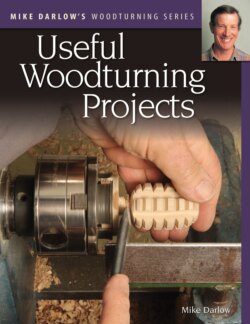Читать книгу Mike Darlow's Woodturning Series: Useful Woodturning Projects - Mike Darlow - Страница 27
Chapter 2 SMALL TURNING TOOLS
ОглавлениеTo turn some of the projects in this book you’ll need tools with small noses. (I use nose to mean the sharpened edge and adjacent surfaces of any woodturning gouge, chisel or scraper.) In this chapter I discuss how to source small-nosed parting tools, skews, and detail gouges.
Manufacturers do make small-nosed tools. As figure 2.1 illustrates, their blade cross sections are usually constant along their blades’ lengths and are typically scaled-down versions of the blade cross sections used for general turning. That approach too often results in blades which flex in use and thus cause catches.
Most turnings with narrow coves typically have maximum diameters less than 50 mm. Manufacturers perhaps therefore ignore the reality that their small-nosed turning tools will sometimes be used with tool overhangs considerably longer than 25 mm. Tool overhangs can be minimised by continuallly moving the toolrest forwards, but this is undesirable because it:
• cramps your tool manipulations
• slows the rate of production
Figure 2.1 A HSS detail gouge which flexes in use. Its exposed length is 70 mm, and its diameter is 4 mm.
• impairs you seeing both the upper and lower edges of the turning’s profile so that you can readily judge and compare diameters and forms.
This chapter therefore considers how to source stiff-bladed, small-nosed versions of the main tool types, and ends by showing three diameter gauges and a calliper which you’ll find ideal when turning smaller diameters.
